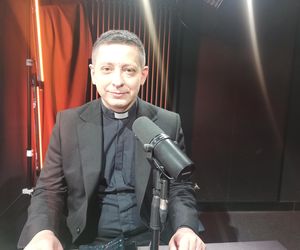The Conclave: From Seclusion To The Announcement Of The New Pope

Table of Contents
The History and Evolution of the Papal Conclave
The Papal Conclave, as we know it today, didn't emerge overnight. Its evolution spans centuries, shaped by political intrigue, evolving Church doctrine, and the need for a more structured and transparent process for electing the Pope.
- Early conclaves and their challenges: Early papal elections were often tumultuous affairs, marred by bribery, violence, and outside interference from secular rulers. The lack of formal rules frequently led to protracted and divisive processes.
- The influence of political powers on papal elections: For centuries, powerful monarchs and nobles exerted significant influence over papal elections, often attempting to install candidates favorable to their interests. This led to the development of increasingly complex regulations aimed at reducing external pressure.
- The establishment of formal rules and regulations: Over time, the Church established formal rules and regulations governing the Papal Conclave, aiming to ensure fairness, transparency, and the free choice of electors. These regulations defined the eligibility criteria for cardinals, the voting procedures, and the overall conduct of the conclave.
- Modern reforms and their impact on the process: The 20th and 21st centuries saw significant reforms in the Papal Conclave, aiming to improve transparency and reduce the potential for outside interference. The process became more formalized, with clearer rules and procedures.
- Key historical conclaves and their outcomes: Certain conclaves stand out in history due to their unique circumstances and outcomes. For instance, the 1978 conclave witnessed the remarkably short papacy of John Paul I, followed swiftly by the election of John Paul II, who led the Church for over two decades. These examples highlight the dynamic and sometimes unpredictable nature of the Papal Conclave.
The Seclusion and Daily Life Within the Conclave
Once the cardinals gather in the Sistine Chapel, they enter a world of strict seclusion and intense deliberation. The daily routine is carefully structured to facilitate prayer, reflection, and the crucial task of electing the next Pope.
- The "Habemus Papam" announcement and its significance: The iconic phrase, "Habemus Papam!" ("We have a Pope!") signals the culmination of the conclave and is met with joyous celebration worldwide.
- The role of the Master of Ceremonies: This key figure ensures the smooth functioning of the conclave, overseeing the logistics and procedures.
- The living quarters and facilities provided for the cardinals: The cardinals reside within the Vatican walls, living in simple accommodations, fostering an atmosphere of focused contemplation and prayer.
- The process of voting, including the use of ballots and scrutiny: The voting process is meticulously detailed, involving secret ballots and strict measures to ensure the integrity of the election.
- The importance of maintaining secrecy and preventing external influence: Secrecy is paramount to ensure the cardinals are free from external pressures and can make their choices based solely on their conscience and judgment.
The Voting Process: Scrutiny and the Two-Thirds Majority
The heart of the Papal Conclave lies in its voting process. A two-thirds majority is required to elect a new Pope. This requirement ensures a broad consensus amongst the cardinals.
- Explanation of the ballot process: Ballots are meticulously prepared and cast in a manner designed to preserve secrecy.
- The role of the scrutineers: These cardinals oversee the counting of the ballots, ensuring the accuracy and impartiality of the process.
- The significance of the two-thirds majority rule: This rule prevents a simple majority from imposing its will, guaranteeing a broad base of support for the newly elected Pope.
- Procedures for handling invalid ballots: Specific procedures are in place to deal with any ballots deemed invalid, ensuring fairness and accountability.
- What happens if a two-thirds majority isn't reached: If no candidate achieves the required two-thirds majority, the voting continues until a Pope is elected.
From the Sistine Chapel to the Announcement: The Public Unveiling of the New Pope
The moment the two-thirds majority is reached, the world awaits the announcement. The transition from the seclusion of the Sistine Chapel to the public unveiling of the new Pope is a dramatic and significant event.
- The significance of the white smoke signal: The appearance of white smoke from the Sistine Chapel chimney signals to the world that a new Pope has been elected.
- The role of the Cardinal Camerlengo: This cardinal acts as the head of the College of Cardinals during the sede vacante (vacancy of the papal office) and plays a crucial role in the announcement process.
- The announcement from the balcony of St. Peter's Basilica: The formal announcement of the new Pope is made from the central balcony of St. Peter's Basilica, greeted by cheers from the vast crowd gathered below.
- The first blessing ("Urbi et Orbi"): The newly elected Pope delivers his first blessing to the city of Rome and the world.
- The initial appearances and addresses of the newly elected Pope: The new Pope makes his first public appearances, beginning his papacy with addresses and messages to the faithful.
The Aftermath: The New Pope's Inauguration and Future Role
Following the announcement, the newly elected Pope embarks on his papacy. His inauguration marks the beginning of his ministry, setting the stage for his future leadership.
- The Papal Inauguration Mass: A grand liturgical celebration formally installs the new Pope as the head of the Catholic Church.
- The new Pope's first pastoral duties: The new Pope begins his pastoral duties, addressing urgent issues and concerns facing the Church.
- Challenges facing the Catholic Church: The modern Catholic Church faces numerous challenges, including evolving social values and internal reforms.
- The new Pope's agenda and priorities: The newly elected Pope outlines his agenda and priorities, shaping the direction of the Church for his papacy.
- Ongoing impact of the conclave: The conclave's impact extends far beyond the announcement, influencing the Church's direction and shaping its global presence for years to come.
Conclusion:
The Papal Conclave, from its secluded beginnings to the electrifying announcement of the new Pope, remains a captivating and significant event. Understanding this complex process provides a deeper appreciation for the weight and responsibility inherent in selecting the next spiritual leader of billions. To further deepen your understanding of this pivotal event in Catholic history, we encourage you to continue your research into the intricacies of the Papal Conclave and its fascinating historical significance. Learn more about the nuances of the Papal Conclave and its lasting impact on the world.

Featured Posts
-
 Is This Xrps Big Moment Etf Applications Sec Actions And Market Impact
May 07, 2025
Is This Xrps Big Moment Etf Applications Sec Actions And Market Impact
May 07, 2025 -
 Ks Sliwinski O Konklawe Dlaczego Medialni Faworyci Rzadko Zostaja Papiezami
May 07, 2025
Ks Sliwinski O Konklawe Dlaczego Medialni Faworyci Rzadko Zostaja Papiezami
May 07, 2025 -
 The Curry Family Ayeshas View On Marital Prioritization
May 07, 2025
The Curry Family Ayeshas View On Marital Prioritization
May 07, 2025 -
 Karate Kid 6 A Mixed Reaction To Ralph Macchios Return
May 07, 2025
Karate Kid 6 A Mixed Reaction To Ralph Macchios Return
May 07, 2025 -
 Dame Laura Kennys Daughter Name Revealed Following Fertility Journey
May 07, 2025
Dame Laura Kennys Daughter Name Revealed Following Fertility Journey
May 07, 2025
